
Living Reviews in Relativity
Scope & Guideline
Unveiling the Latest in Relativity Research
Introduction
Aims and Scopes
- Gravitational Wave Physics:
The journal consistently emphasizes research on gravitational waves, exploring their detection, properties, and implications for astrophysics and fundamental physics. - Cosmology and Astrophysics:
It covers cosmological studies, particularly those related to gravitational phenomena, such as the influence of gravitational waves on cosmic evolution and structure. - Theoretical Foundations of Gravity:
A significant focus is on the theoretical aspects of general relativity, including post-Newtonian theories and advanced formulations like Hamiltonian mechanics. - Experimental Techniques and Probes:
The journal highlights experimental approaches to testing gravitational theories, including the use of advanced instruments like LISA (Laser Interferometer Space Antenna) and other innovative technologies. - Quantum Gravity and Black Hole Physics:
Research on quantum aspects of gravity, such as quantum black holes and their models, is a vital area, contributing to the intersection of quantum mechanics and general relativity.
Trending and Emerging
- Advanced Gravitational Wave Detection Techniques:
There is a growing focus on sophisticated detection methods for gravitational waves, particularly in the context of high-frequency ranges and new observational strategies. - Cosmological Probes with Gravitational Waves:
Recent studies emphasize the use of gravitational waves as probes for cosmological studies, indicating a trend towards integrating gravitational physics with cosmological observations. - Quantum Aspects of Gravity:
An increasing number of papers are exploring the interplay between quantum mechanics and gravitational theories, particularly in contexts like black hole thermodynamics and quantum black hole models. - Testing Modified Theories of Gravity:
Recent publications highlight a trend towards testing and constraining various modified theories of gravity, reflecting a broader interest in understanding gravitational phenomena beyond general relativity. - Astrophysical Implications of Gravitational Phenomena:
A rising trend is observed in studies linking gravitational phenomena to astrophysical events, such as black hole mergers and their electromagnetic counterparts, showcasing an interdisciplinary approach.
Declining or Waning
- Classical General Relativity Applications:
There seems to be a waning interest in classical applications of general relativity, with fewer papers focusing solely on traditional aspects of the theory without modern experimental or theoretical extensions. - Non-relativistic Gravitation Studies:
Research that primarily deals with non-relativistic aspects of gravity is less frequently featured, as the community shifts towards more relativistic frameworks and higher-energy phenomena. - Static and Simple Gravitational Models:
There is a noticeable decline in the exploration of static or overly simplistic models of gravity, as contemporary research seeks more complex and realistic scenarios that account for dynamic behaviors.
Similar Journals

EUROPEAN PHYSICAL JOURNAL C
Elevating Research Standards with Rigorous Peer ReviewEUROPEAN PHYSICAL JOURNAL C (EPJ C), published by SPRINGER, stands as a premier platform for innovative research in the domains of Physics and Engineering. With its Open Access policy established in 2014, EPJ C ensures that groundbreaking findings are readily available to the global scientific community, enhancing accessibility and collaboration. The journal, indexed in prestigious databases, boasts an impressive impact factor and ranks within the Q1 category for both Engineering and Physics and Astronomy, placing it among the top-tier journals in these fields. Celebrated for its rigorous peer-review process, EPJ C offers a wide-ranging scope encompassing various topics in particle physics, quantum field theory, and related interdisciplinary studies. Its consistent publication since 1991 has fostered a vibrant community of researchers dedicated to advancing knowledge and innovation in physics and engineering. Join the scholarly discussion and contribute to the cutting-edge research made possible through EPJ C's esteemed platform.

Universe is a distinguished peer-reviewed journal published by MDPI, specializing in the dynamic fields of Physics and Astronomy. Established in 2015, this Open Access journal has rapidly gained recognition, achieving a prestigious Q1 quartile ranking in its category as of 2023. With its E-ISSN 2218-1997, the journal primarily serves the international scientific community, offering a platform for researchers to disseminate innovative ideas and findings. Based in Switzerland, Universe covers a wide range of topics within astronomy and astrophysics, ensuring that cutting-edge research is accessible to an ever-growing audience. Its commitment to open access principles since its inception allows for unrestricted dissemination of knowledge, fostering a collaborative environment essential for scientific advancement. By aligning its objectives with the promotion of high-quality research and interdisciplinary discourse, Universe stands as a vital resource for academics, professionals, and students aiming to contribute to and engage with the ever-evolving landscape of astronomical research.
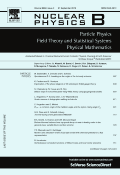
NUCLEAR PHYSICS B
Leading the Charge in Open Access Nuclear ResearchNUCLEAR PHYSICS B, published by Elsevier, stands at the forefront of research in the dynamic field of Nuclear and High Energy Physics. Established in 1967, this prestigious journal has developed a reputation for excellence, now positioned in the Q1 category according to its 2023 quartile rankings. With an impressive Scopus rank of #21 out of 87 in its category and a commendable 76th percentile, it serves as a vital resource for scholars investigating the underlying principles of nuclear interactions and particle physics. The journal transitioned to an Open Access model in 2014, ensuring that groundbreaking research is accessible to a global audience. Its commitment to quality and innovation makes NUCLEAR PHYSICS B an essential platform for researchers, professionals, and students aiming to stay at the cutting edge of discoveries in this expansive field, contributing to the scientific discourse for nearly six decades.
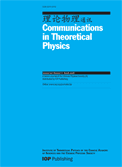
COMMUNICATIONS IN THEORETICAL PHYSICS
Advancing the frontiers of theoretical physics.COMMUNICATIONS IN THEORETICAL PHYSICS is a distinguished journal published by IOP Publishing Ltd, focusing on the broad and evolving field of theoretical physics. With an ISSN of 0253-6102 and an E-ISSN of 1572-9494, this journal provides a platform for the dissemination of innovative research that contributes to the understanding of complex physical concepts. Situated in the United Kingdom, it has established itself as a pivotal resource from 1996 to 2024, achieving a commendable Q2 ranking in the category of Physics and Astronomy (miscellaneous) for 2023. With a Scopus ranking of #18 out of 81 in its category, demonstrating a 78th percentile, this journal plays a crucial role in enhancing scholarly communication among researchers, professionals, and students alike. Although it does not currently offer Open Access options, the journal's comprehensive scope and commitment to high-quality peer-reviewed research underline its significance in the scientific community, making it an essential reading for anyone engaged in theoretical physics.

INTERNATIONAL JOURNAL OF MODERN PHYSICS A
Pioneering insights into the fabric of the universe.INTERNATIONAL JOURNAL OF MODERN PHYSICS A, published by WORLD SCIENTIFIC PUBL CO PTE LTD, stands as a pivotal platform in advancing the frontiers of research within the fields of Astronomy and Astrophysics, Atomic and Molecular Physics, and Nuclear and High Energy Physics. Established in 1989, this journal has systematically contributed to the scientific community, with a demonstrated impact as indicated by its Q2 category rankings across these critical disciplines in 2023. Researchers and professionals are encouraged to engage with its rigorous peer-reviewed content, fostering a deeper understanding of modern physics theories and experimental breakthroughs. Although the journal operates under a conventional access model, it remains a vital resource for those seeking to disseminate their findings and stay abreast of cutting-edge developments. With an emphasis on quality and breadth of research, the journal continues to attract submissions from leading physicists and scholars, enhancing its reputation as a key academic resource.

INTERNATIONAL JOURNAL OF THEORETICAL PHYSICS
Fostering Innovation in Theoretical PhysicsInternational Journal of Theoretical Physics is a premier academic journal dedicated to the advancement of knowledge in the fields of theoretical physics and mathematics. Published by Springer/Plenum Publishers, this esteemed journal has been a vital platform for researchers since its inception in 1968. With an impressive track record and an emphasis on high-quality, innovative research, the journal currently ranks in the third quartile (Q3) in both the Mathematics (Miscellaneous) and Physics and Astronomy (Miscellaneous) categories as of 2023. While the journal is not open access, it offers accessible subscription options for institutions and individuals. The International Journal of Theoretical Physics serves as an essential resource for scholars and practitioners looking to deepen their understanding and contribute to the evolving landscape of theoretical research, making it a key player in nurturing academic discourse and fostering collaboration in its field.
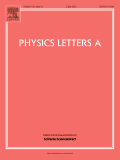
PHYSICS LETTERS A
Pioneering Insights in Physics and AstronomyPhysics Letters A is a renowned scientific journal published by Elsevier, dedicated to the field of physics and astronomy. Established in 1963, it has continuously evolved, offering a platform for the swift dissemination of significant research findings in various branches of physics. As of 2023, it holds a commendable Q2 ranking in the category of Physics and Astronomy (miscellaneous) and ranks 69th out of 243 journals in the same domain according to Scopus, positioning itself in the 71st percentile of academic impact. With its comprehensive scope, Physics Letters A provides a vital resource for researchers, professionals, and students, facilitating academic discourse and advancing knowledge across the field. Although it does not currently offer Open Access options, its rigorous peer-review process ensures high-quality content. It is centrally located in Amsterdam, Netherlands, and continues to be an essential outlet for innovative contributions to the physics community through the year 2024 and beyond.

GENERAL RELATIVITY AND GRAVITATION
Diving Deep into the Fabric of Space-TimeGENERAL RELATIVITY AND GRAVITATION is a prestigious journal published by Springer/Plenum Publishers, dedicated to furthering the field of theoretical and experimental relativity and gravitation. With an ISSN of 0001-7701 and E-ISSN of 1572-9532, this journal has established itself as a crucial platform for high-quality research since its inception in 1970, continuing to publish influential findings through 2024. Notably, it is ranked in the top Q1 category within Physics and Astronomy (miscellaneous) for 2023, securing a commendable position at Rank #22/81 on Scopus, which reflects its strong annual performance and impact among peers. While it does not currently offer Open Access options, the journal remains a vital resource for researchers, professionals, and students seeking to explore the complexities of gravitational theory and its applications in modern physics.
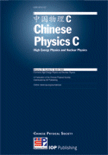
Chinese Physics C
Fostering Innovation in Experimental MethodologiesChinese Physics C is a premier, peer-reviewed journal published by IOP Publishing Ltd, dedicated to advancing knowledge in the fields of Astronomy and Astrophysics, Instrumentation, and Nuclear and High Energy Physics. With an impressive impact factor reflecting its standing in the Q1 quartile across multiple categories, this journal serves as a vital resource for researchers, professionals, and students seeking to engage with cutting-edge developments and experimental findings. Since its inception in 2008, Chinese Physics C has fostered significant collaborations and discussions within the global physics community, enabling easy access to high-quality research through its open access options. Operating from the United Kingdom with a commitment to excellence, this journal not only showcases high-impact papers but also encourages innovative methodologies and interdisciplinary approaches, solidifying its role as an essential platform for dissemination and dialogue in the rapidly evolving landscape of physics.
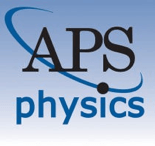
PHYSICAL REVIEW D
Driving Innovation in Nuclear and High Energy ResearchPHYSICAL REVIEW D, published by the American Physical Society, is a premier journal dedicated to the rapid dissemination of significant research findings in the fields of Nuclear and High Energy Physics as well as Physics and Astronomy. With an impressive Impact Factor and a prestigious Q1 ranking in 2023, it stands as one of the leading journals in its domain, with a Scopus ranking of #6 out of 87 in its category, placing it in the 93rd percentile. The journal welcomes rigorous theoretical and experimental studies that advance understandings in particle physics, cosmology, and quantum field theory. Although it does not provide open access, researchers gain a significant platform to reach a global audience and contribute to the ongoing discourse within the scientific community. Published regularly since its convergence starting in 1989, it remains essential for both emerging and established scholars looking to stay at the forefront of high-energy and nuclear physics research.